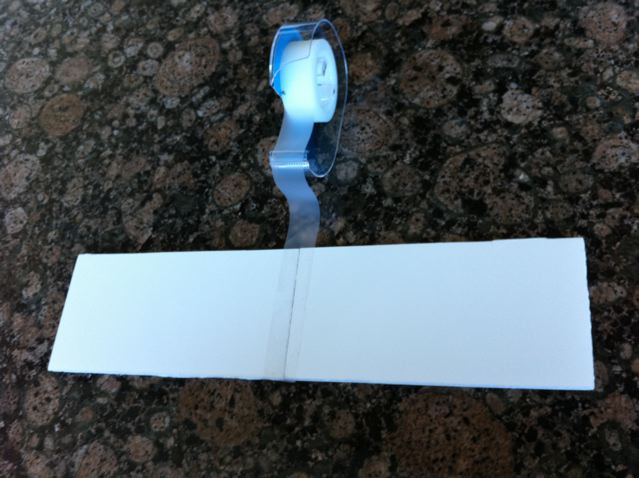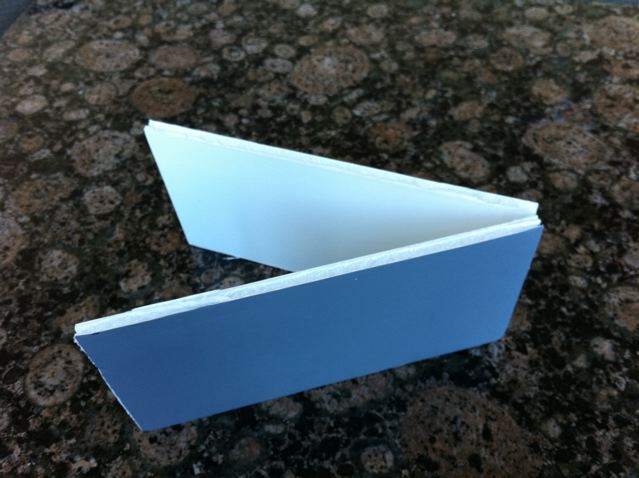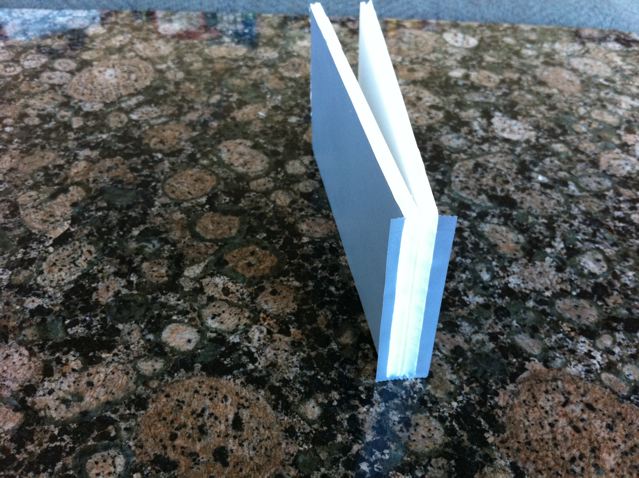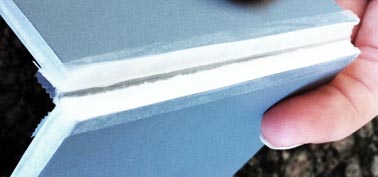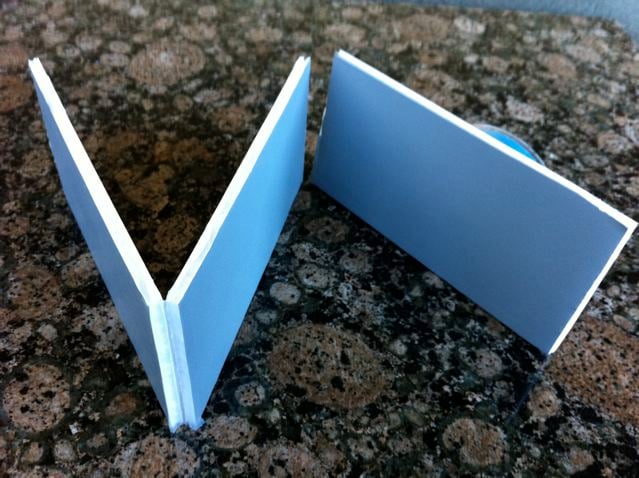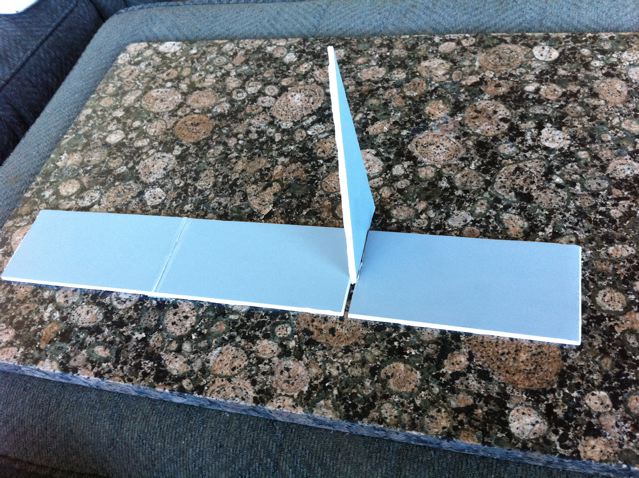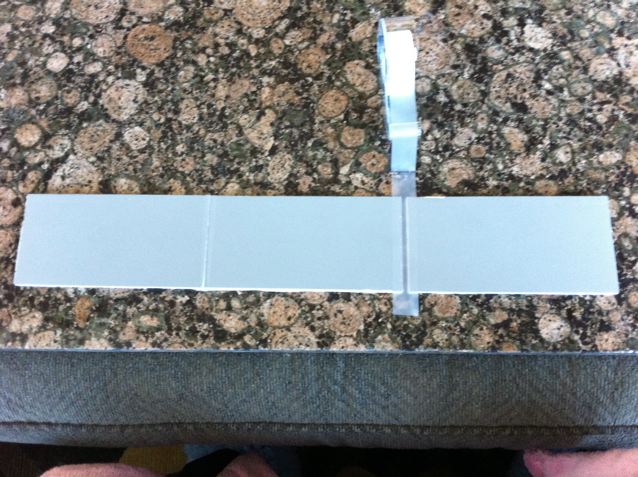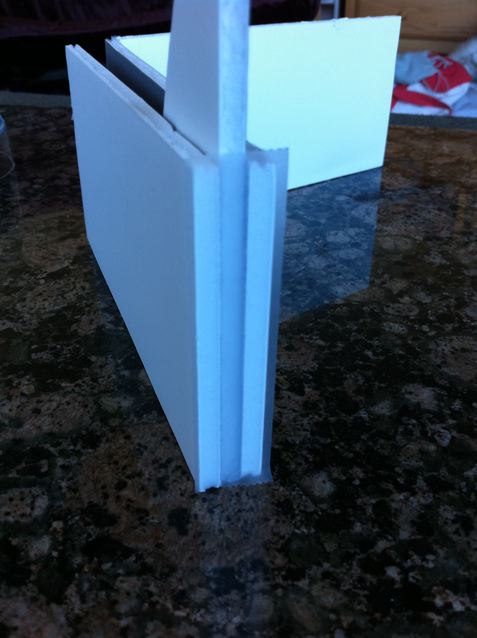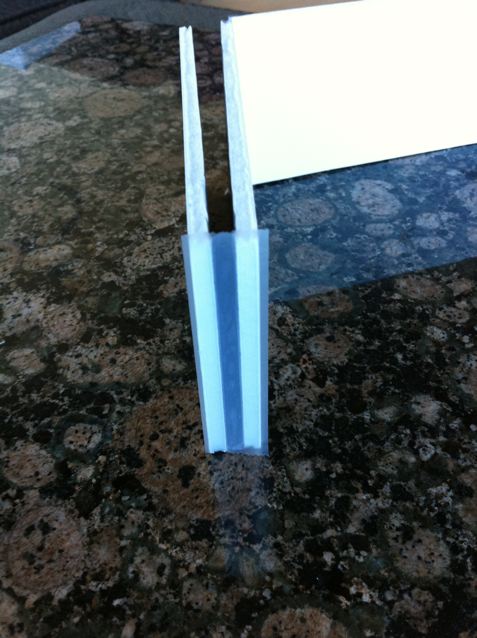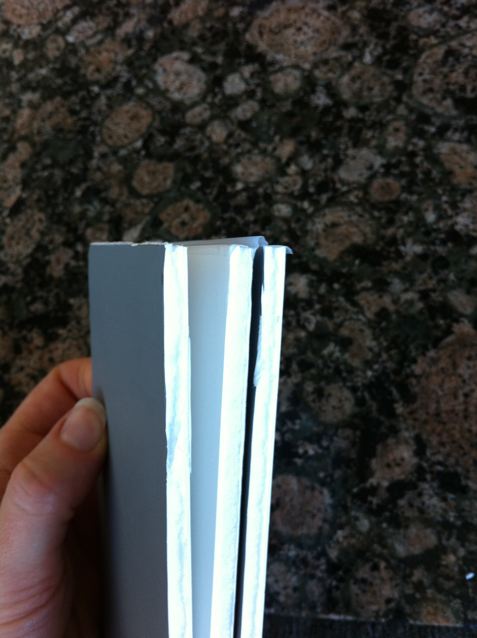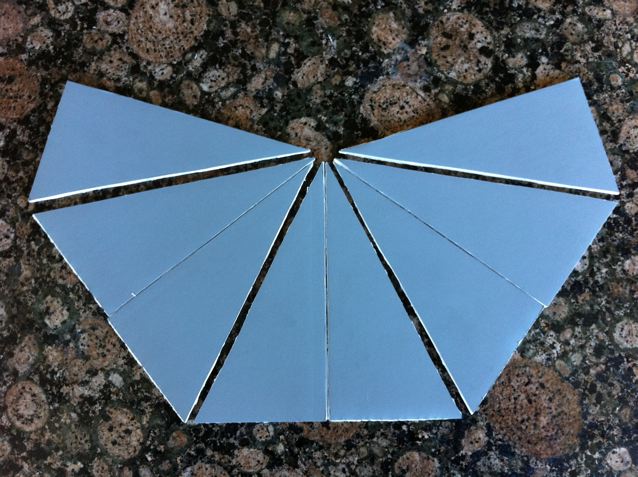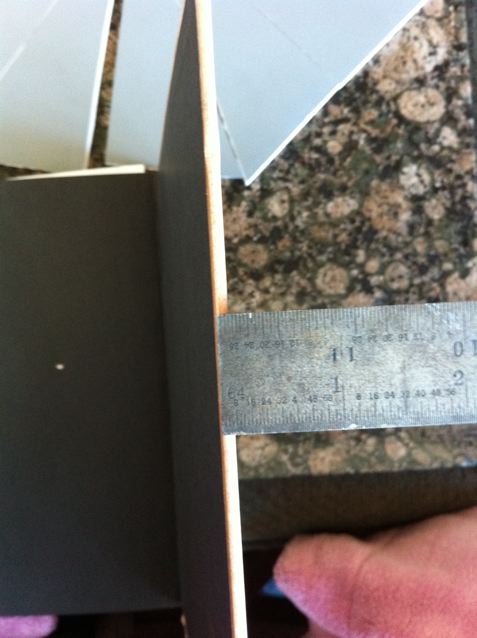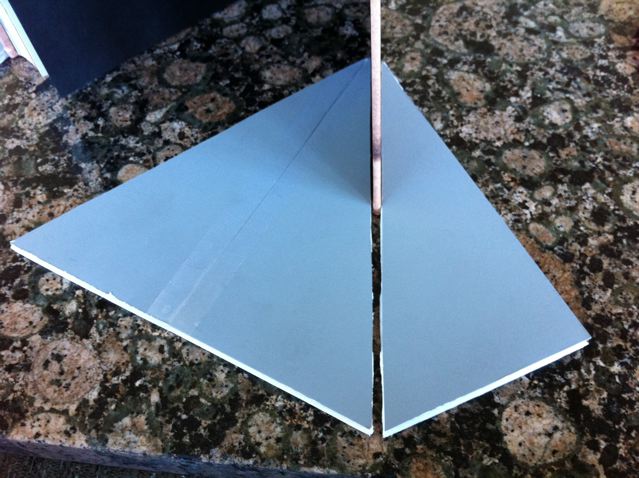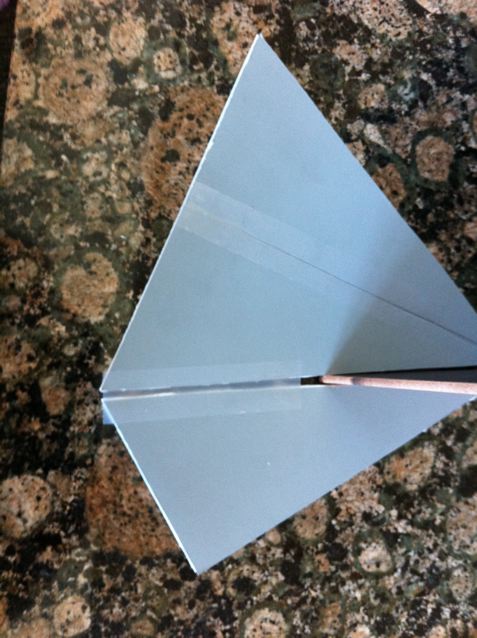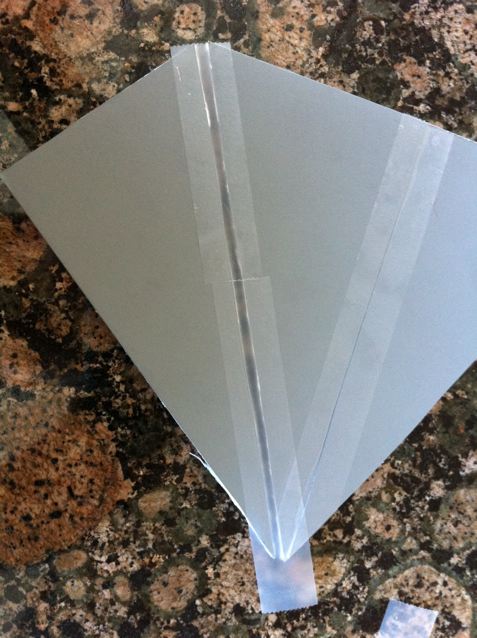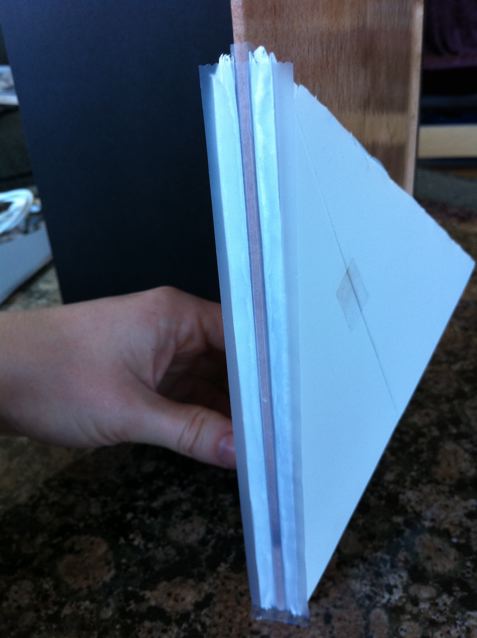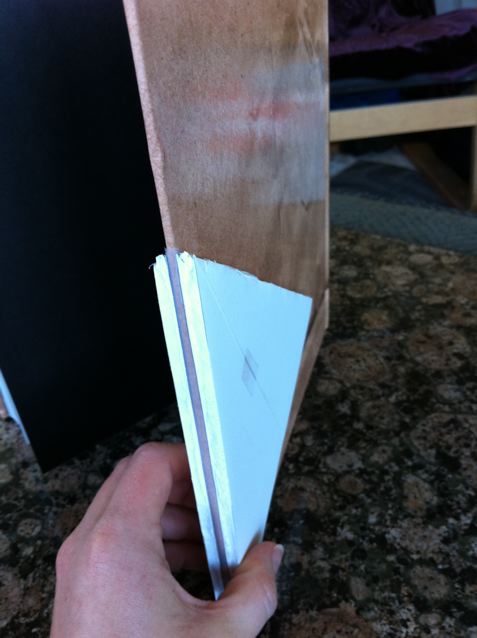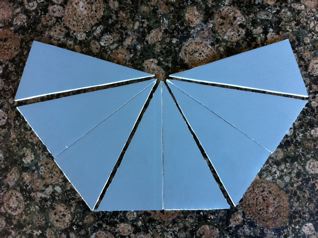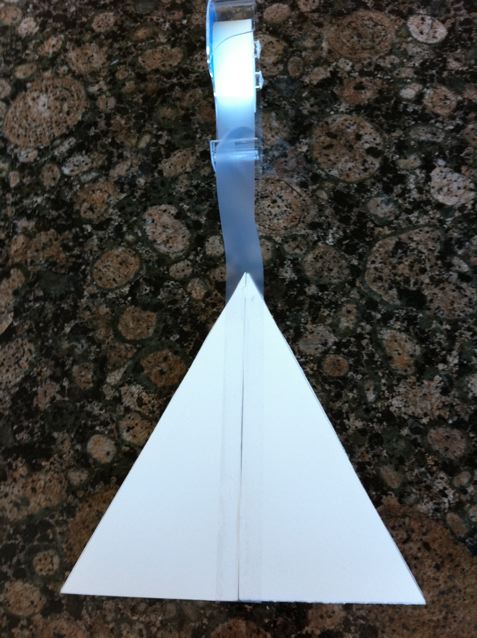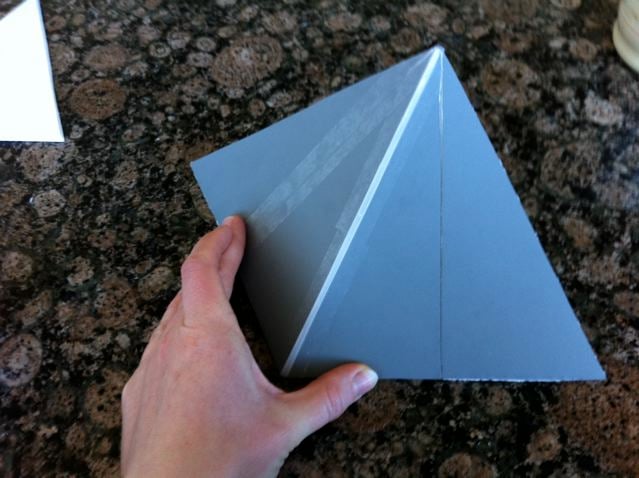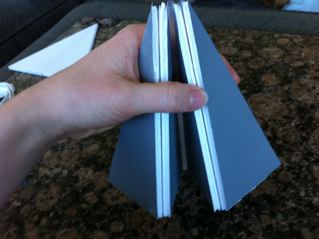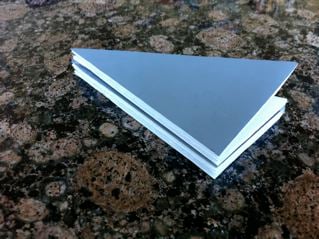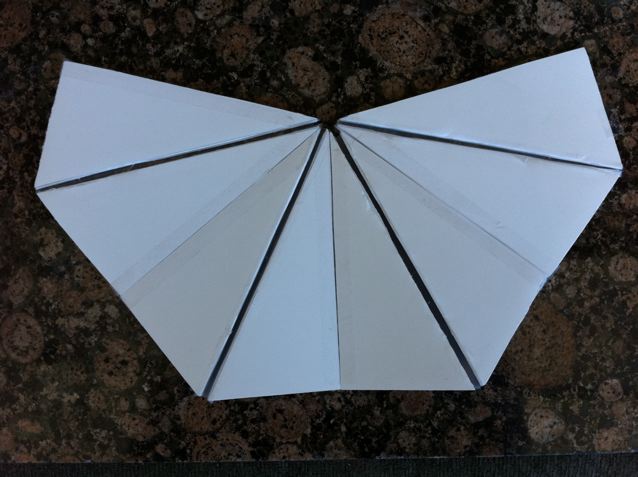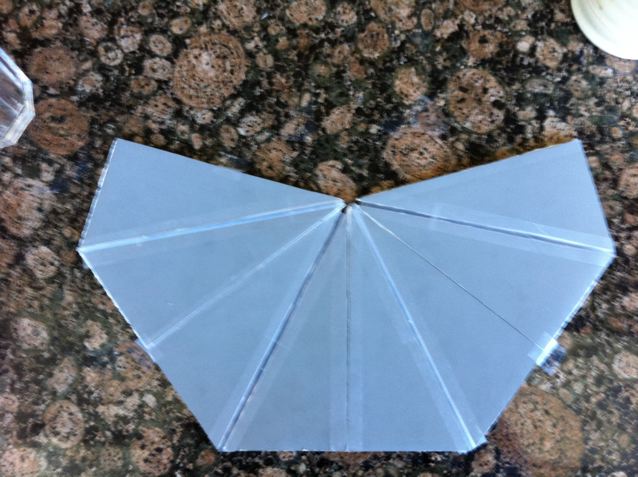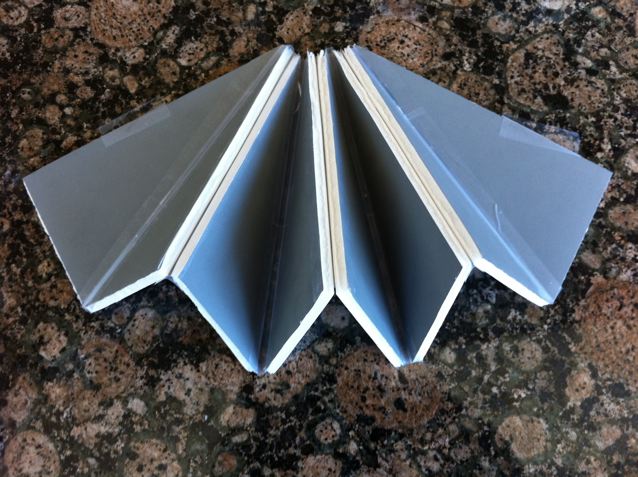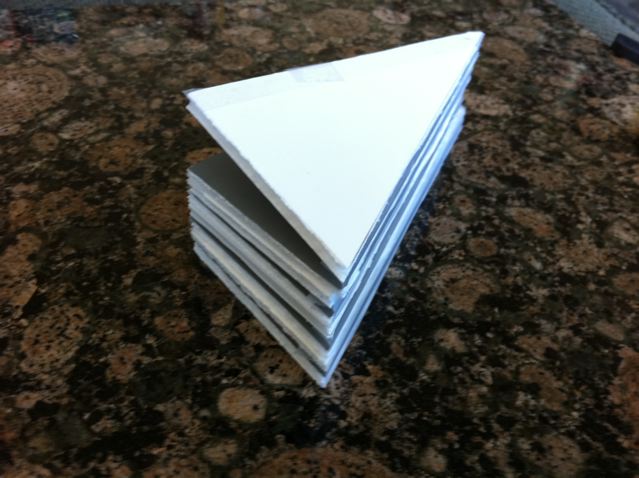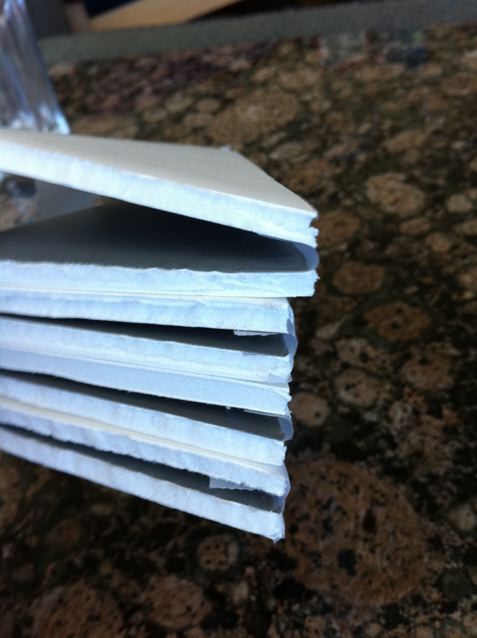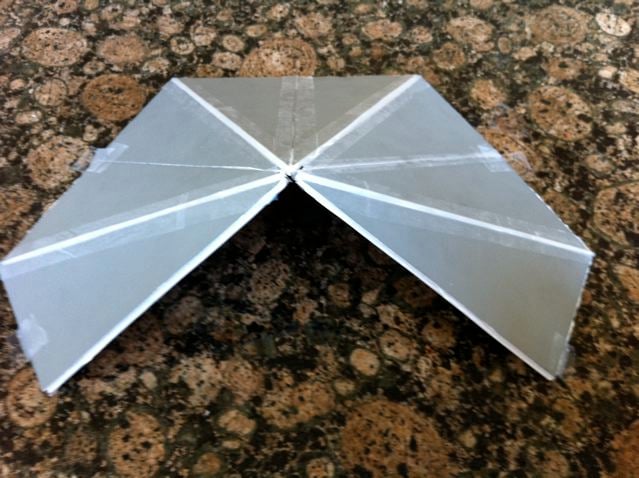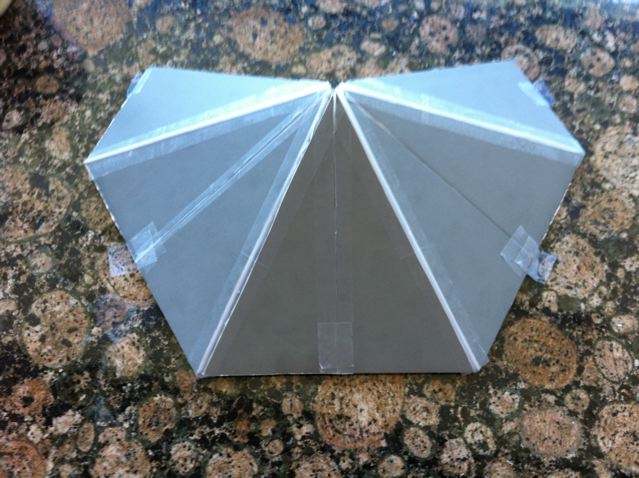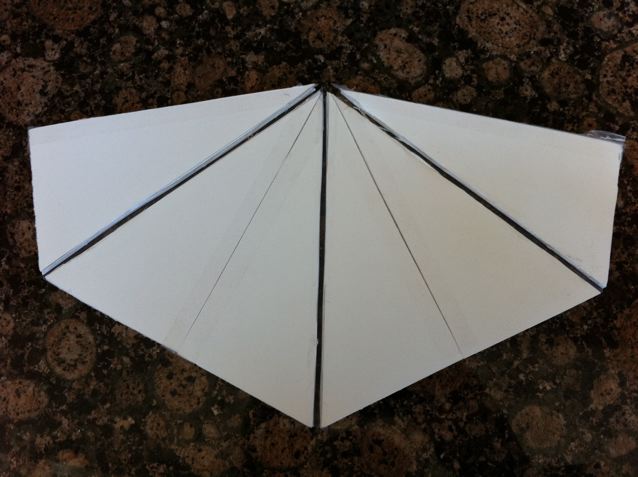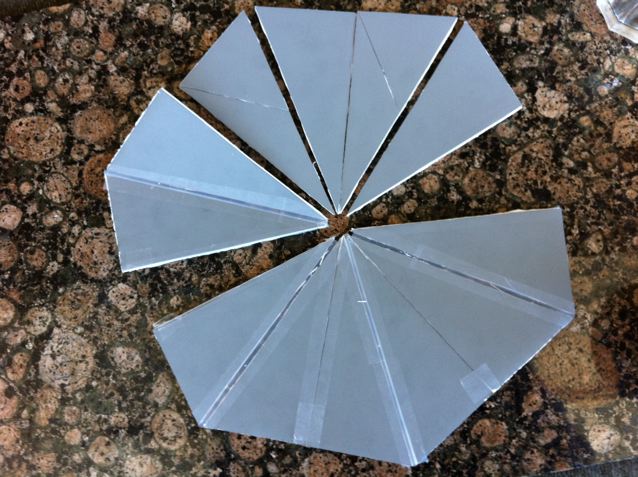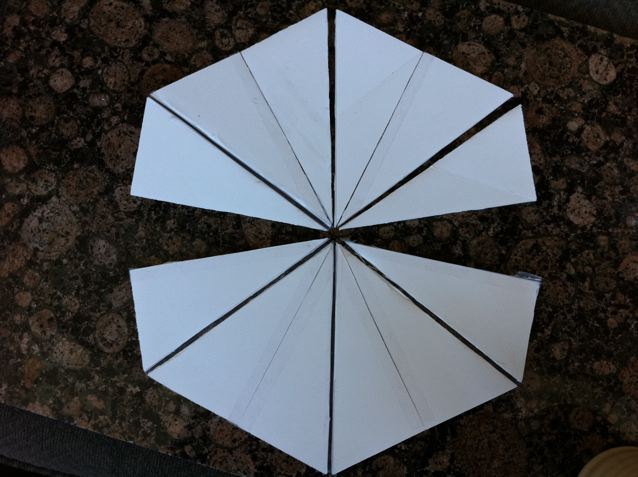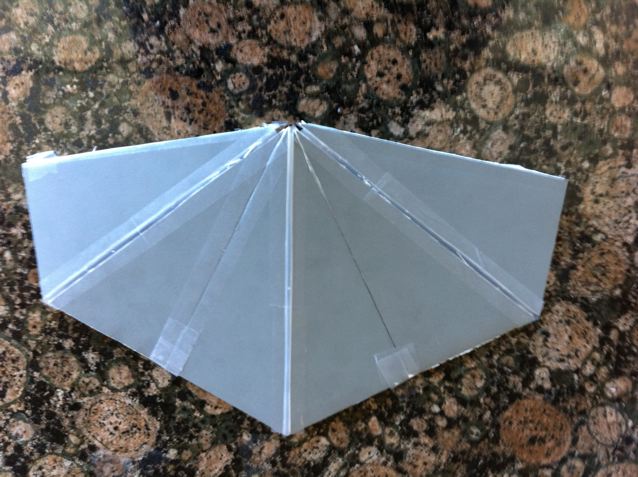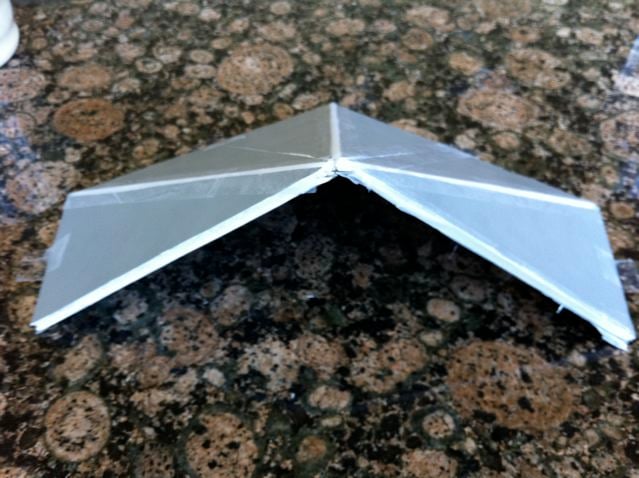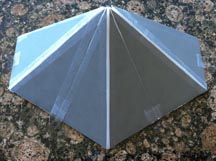No edit summary |
No edit summary |
||
| Line 1: | Line 1: | ||
[[Category:Hexayurt project]] | [[Category:Hexayurt project]] | ||
= Work in progress = | |||
* '''WARNING: THIS IS WORK IN PROGRESS SO PLEASE USE WITH CARE, OR ONLY IN MODELS, UNTIL WE'RE DONE. THANK YOU & DON'T SAY YOU WEREN'T WARNED!''' | |||
* '''###''' SIGNALS NEED FOR CLARIFICATION OR EDITING. | |||
* This page ''may'' end up after [[Hexayurt_playa#Partial_Folding_Hexayurt]]. | |||
* We're working here for clarity and because there are many pictures. | |||
= Camp-Danger Two-Part Folding Hexayurt = | = Camp-Danger Two-Part Folding Hexayurt = | ||
== | == Designers == | ||
Design and instructions by Julie Danger and Chris Camp, at Burning Man 2010 (or earlier). | |||
== Folding with tight and loose hinges == | |||
This is a variation for a folding hexayurt. If the 4'x8' panels you use are 1" thick, you end up with a 12" thick stack that you can truck to the Playa and back. You do most of the work at home, and setting it up takes much less time and hassle. | |||
This is where the magic of the semi-folding yurt happens: | |||
* You will make the tape "hinges" that allow your roof and walls to be pre-assembled in accordion-folding halves. | |||
* This will complete the sealing of the edges of your insulation boards as well. | |||
For both the walls there is a "tight hinge" and a "loose hinge". For the roof there's a "tight hinge" and a "semi-loose hinge" (like the loose, only half the gap). | |||
Currently it works for the classic hexayurt (12 4'x8' panels), but it should work with variations for other "light panel" hexayurts, specifically for the [[Hexayurt_H13 H13]]. | |||
'''### Do you also need less people?''' | |||
== Advantages == | == Advantages == | ||
* | * It's foldable, meaning you will have a stack of panels to transport as usual, but your roof cone will already be in two halves that accordion-fold open, and your walls will be in two halves as well. | ||
* 90% of the work will already be done when you get to the Playa. On arrival, you will skip all the difficult and labor-intensive steps of "constructing the roof cone", which is difficult, especially in the elements of the Black Rock desert: wind, dust, sun, heat. | |||
* | * Usually, you seal all panel edges with tape. Here, you save tape because the hinges provide part of the sealing of the edges. '''### Estimate of savings?''' | ||
* you save tape | * You will not need to do any fancy cutting or need any extra materials. | ||
This is where the semi-folding yurt becomes amazing. You have done both an easy hinge and a tricky hinge-- you use the same technique for the roof cone. This is awesome because: your raw insulation edges become sealed, your roof cone will be pre-assembled so you don't need to do it piece by piece, AND your roof cone will '''already have the correct angles at each corner--so that you can plop it onto the top of your walls in an instant and it snaps to shape. You'll see what I mean.''' | |||
== Video == | |||
'''### List of all videos for quick review.''' | |||
= Step By Step Instructions = | = Step By Step Instructions = | ||
Sequence: (((for each step, number of people needed))) | Sequence: (((for each step, number of people needed))) | ||
* | * Buy stuff. | ||
* | * Make the hexayurt at home. | ||
* | * Fold it. | ||
* | * Take it to the Playa. | ||
* | * Put the walls together. | ||
* | * Put the roof together. | ||
* | * Put the roof on top of the walls. | ||
* | * Fix it to the ground. | ||
* | * Maybe add some good-to-haves. | ||
* | * Live in it. | ||
* | * Cut some tape to fold it again. | ||
* | * Take it back home. | ||
== Things to buy == | == Things to buy == | ||
* Panels: 12 4 foot by 8 foot panels. Usually 1 inch thick, but some use 2 inch thick panels. | |||
* Tape. | |||
* Cutter and '''### number of ''' blades. | |||
* Masks. | |||
* Gloves. | |||
== Cut half of the panels in half, diagonally == | == Cut half of the panels in half, diagonally == | ||
At home, prepare the panels. | At home, prepare the panels. ''This is best done with two people.'' | ||
# Take the six panels which will be used for the roof cone. | # Take the six panels which will be used for the roof cone. | ||
| Line 68: | Line 78: | ||
== Tape some of the edges == | == Tape some of the edges == | ||
'''### Needs rewriting.''' | |||
(((not sure if this is more conveniently done here or when doing first the walls, then the roof))) | (((not sure if this is more conveniently done here or when doing first the walls, then the roof))) | ||
Tape-seal only some edges: | |||
* The 'bases' (2" edges) of all of the triangular roof panels. | |||
* Optional: tape just the "tips" of the roof panels for reinforcement. The best way of doing this is to start the tape about 2-3" from the edge you're sealing. '''See image below.''' There is a trick to keeping the tape tidy at the corners if you feel perfectionistic-- '''see the video'''.'' | |||
# The 8 foot edges on all the rectangular wall panels, but '''do not tape the 4" sections yet'''. | |||
== Tight hinges for the walls == | |||
'''1:''' Lay two 4x8 wall panels next to each other, tightly butting the 4' sections together. | |||
'''2:''' Tape them together while they are flat. This creates what's called the 'inside seam' of the hinge. You can use 3" tape instead of 6" if you like. | |||
[[Image:Camp-Danger-Folding-Hexayurt-1.jpg]] | |||
'''3:''' Stand them up and close the two panels like a book. Think of this like bookbinding on the spine of a book: you closed the book at this hinge. | |||
'''4:''' Complete the hinge by taping "the spine of the book". Use 6" tape. This finishes the seal of the raw insulation edges as well. | |||
[[Image:Camp-Danger-Folding-Hexayurt-2.jpg]] | [[Image:Camp-Danger-Folding-Hexayurt-2.jpg]] | ||
[[Image:Camp-Danger-Folding-Hexayurt-3.jpg]] | [[Image:Camp-Danger-Folding-Hexayurt-3.jpg]] | ||
| Line 94: | Line 106: | ||
[[Image:Camp-Danger-Folding-Hexayurt-4.jpg]] | [[Image:Camp-Danger-Folding-Hexayurt-4.jpg]] | ||
== | == Loose hinges for the walls == | ||
The "loose hinge" is a bit more difficult but is the "magic" of this style of yurt. It makes it pre-assembled but allows you to fold it up for transport. | The "loose hinge" is a bit more difficult but is the "magic" of this style of yurt. It makes it pre-assembled but allows you to fold it up for transport. What makes this work is this newly made flexible hinge, so that you can transport your panels. This technique is far more valuable on the roof cone! | ||
[[Image:Camp-Danger-Folding-Hexayurt-5.jpg]] | [[Image:Camp-Danger-Folding-Hexayurt-5.jpg]] | ||
You need a gap between your wall panels that is equal to the thickness of your panel. Most people use 1" insulation, so this gap will be 1". If you use 2" insulation, make it a 2" gap, etc. It's easy to use another panel as a "spacer" to get the right distance. | '''5:''' You need a gap between your wall panels that is equal to the thickness of your panel. Most people use 1" insulation, so this gap will be 1". If you use 2" insulation, make it a 2" gap, etc. It's easy to use another panel as a "spacer" to get the right distance. | ||
[[Image:Camp-Danger-Folding-Hexayurt-6.jpg]] | [[Image:Camp-Danger-Folding-Hexayurt-6.jpg]] | ||
Again, start by taping the panels while flat, you could use 3" tape here too. Notice the gap! | '''6:''' Again, start by taping the panels while flat, you could use 3" tape here too. Notice the gap! | ||
[[Image:Camp-Danger-Folding-Hexayurt-7.jpg]] | [[Image:Camp-Danger-Folding-Hexayurt-7.jpg]] | ||
Next, use another panel as a spacer. Then do the "bookbinding" style taping on this hinge as well - you will need 6" tape for this. | '''7:''' Next, use another panel as a spacer. Then do the "bookbinding" style taping on this hinge as well - you will need 6" tape for this. | ||
[[Image:Camp-Danger-Folding-Hexayurt-8.jpg]] | [[Image:Camp-Danger-Folding-Hexayurt-8.jpg]] | ||
| Line 115: | Line 127: | ||
[[Image:Camp-Danger-Folding-Hexayurt-9.jpg]] | [[Image:Camp-Danger-Folding-Hexayurt-9.jpg]] | ||
[[Image:Camp-Danger-Folding-Hexayurt-10.jpg]] | [[Image:Camp-Danger-Folding-Hexayurt-10.jpg]] | ||
== | == Second half of the walls == | ||
Repeat steps 1 to 7 with 3 more panels. Now you have 2 stacks of 3 panels each, pre-taped. | |||
== Place the triangles the roof == | |||
There are two kinds of joints in the roof: | |||
* "Vertical joints": where the vertical side of one triangle touches the vertical side of the next triangle. They will have tight hinges, because the two triangles act as one solid triangle that goes on one wall. | |||
* "Hypotenuse joints": where the hypotenuse side of one triangle touches the hipotenuse side of the next triangle, and where one solid triangle touches the next solid triangle. They will have loose hinges -- but beware, not with a full 1-panel-sized gap, but with a gap half that size. | |||
(((we could show each triangle in blue, and the ''solid'' ones in red))) | |||
== | == Make roof loose hinges == | ||
Your gap is not equal to the thickness of your panels-- it's 1/2 the thickness.''' If you forget that, your roof cone will not work and you will be sad. (((doing math: this means that if you use 1" thick insulation panels, your gap for the roof-cone-tricky-hinges will be about 1/2". If you use 2" thick, it'll be 1", etc etc. For my miniature, one half the thickness happens to be a 68th of an inch, but you shouldn't worry about that, just '''don't forget that it's 1/2 the thickness'''. On my first hexayurt, a meticulous woodworker measured the insulation and found out it's a little thicker than 1", so our roof-cone-gap became 5/8ths of an inch. You can be meticulous too if you want.))) | |||
[[Image:Camp-Danger-Folding-Hexayurt-11.jpg]] | [[Image:Camp-Danger-Folding-Hexayurt-11.jpg]] | ||
| Line 169: | Line 169: | ||
[[Image:Camp-Danger-Folding-Hexayurt-18.jpg]] | [[Image:Camp-Danger-Folding-Hexayurt-18.jpg]] | ||
== Make roof tight hinges == | |||
When you do the "easy hinge," the "inside seam of the bookbinding" will probably communicate with the "logo side" of your panels (in my example, it's white not grey." Do this seam and the outer "bookbinding" as before. You will be adding these panels on to what you already made-- my picture doesn't look right. | When you do the "easy hinge," the "inside seam of the bookbinding" will probably communicate with the "logo side" of your panels (in my example, it's white not grey." Do this seam and the outer "bookbinding" as before. You will be adding these panels on to what you already made-- my picture doesn't look right. | ||
| Line 174: | Line 176: | ||
[[Image:Camp-Danger-Folding-Hexayurt-19.jpg]] | [[Image:Camp-Danger-Folding-Hexayurt-19.jpg]] | ||
This is why this design is so fantasic: by the magic of geometry, the gap you created with the tricky hinge creates the perfect angle for your roof-cone. Therefore, when you complete each half of your roof cone, | == Fold the roof == | ||
This is why this design is so fantasic: by the magic of geometry, the gap you created with the tricky hinge creates the perfect angle for your roof-cone. Therefore, when you complete each half of your roof cone, once you open it, it "snaps" to the correct shape for placing on top of the walls--this image doesn't show it perfectly because it's an incomplete half: | |||
[[Image:Camp-Danger-Folding-Hexayurt-20.jpg]] | [[Image:Camp-Danger-Folding-Hexayurt-20.jpg]] | ||
Revision as of 19:16, 7 May 2011
Work in progress
- WARNING: THIS IS WORK IN PROGRESS SO PLEASE USE WITH CARE, OR ONLY IN MODELS, UNTIL WE'RE DONE. THANK YOU & DON'T SAY YOU WEREN'T WARNED!
- ### SIGNALS NEED FOR CLARIFICATION OR EDITING.
- This page may end up after Hexayurt_playa#Partial_Folding_Hexayurt.
- We're working here for clarity and because there are many pictures.
Camp-Danger Two-Part Folding Hexayurt
Designers
Design and instructions by Julie Danger and Chris Camp, at Burning Man 2010 (or earlier).
Folding with tight and loose hinges
This is a variation for a folding hexayurt. If the 4'x8' panels you use are 1" thick, you end up with a 12" thick stack that you can truck to the Playa and back. You do most of the work at home, and setting it up takes much less time and hassle.
This is where the magic of the semi-folding yurt happens:
- You will make the tape "hinges" that allow your roof and walls to be pre-assembled in accordion-folding halves.
- This will complete the sealing of the edges of your insulation boards as well.
For both the walls there is a "tight hinge" and a "loose hinge". For the roof there's a "tight hinge" and a "semi-loose hinge" (like the loose, only half the gap).
Currently it works for the classic hexayurt (12 4'x8' panels), but it should work with variations for other "light panel" hexayurts, specifically for the Hexayurt_H13 H13.
### Do you also need less people?
Advantages
- It's foldable, meaning you will have a stack of panels to transport as usual, but your roof cone will already be in two halves that accordion-fold open, and your walls will be in two halves as well.
- 90% of the work will already be done when you get to the Playa. On arrival, you will skip all the difficult and labor-intensive steps of "constructing the roof cone", which is difficult, especially in the elements of the Black Rock desert: wind, dust, sun, heat.
- Usually, you seal all panel edges with tape. Here, you save tape because the hinges provide part of the sealing of the edges. ### Estimate of savings?
- You will not need to do any fancy cutting or need any extra materials.
This is where the semi-folding yurt becomes amazing. You have done both an easy hinge and a tricky hinge-- you use the same technique for the roof cone. This is awesome because: your raw insulation edges become sealed, your roof cone will be pre-assembled so you don't need to do it piece by piece, AND your roof cone will already have the correct angles at each corner--so that you can plop it onto the top of your walls in an instant and it snaps to shape. You'll see what I mean.
Video
### List of all videos for quick review.
Step By Step Instructions
Sequence: (((for each step, number of people needed)))
- Buy stuff.
- Make the hexayurt at home.
- Fold it.
- Take it to the Playa.
- Put the walls together.
- Put the roof together.
- Put the roof on top of the walls.
- Fix it to the ground.
- Maybe add some good-to-haves.
- Live in it.
- Cut some tape to fold it again.
- Take it back home.
Things to buy
- Panels: 12 4 foot by 8 foot panels. Usually 1 inch thick, but some use 2 inch thick panels.
- Tape.
- Cutter and ### number of blades.
- Masks.
- Gloves.
Cut half of the panels in half, diagonally
At home, prepare the panels. This is best done with two people.
- Take the six panels which will be used for the roof cone.
- You want to have all panels with the brand of the panel maker towards the inside of the yurt, so you cut 3 panels from right to left and the remaining 3 panels from right to left:
- Draw a diagonal line, left to right, corner to corner, on three of the panels using the ruler, or another panel, or a piece of string, as a guide.
- Draw a diagonal line, right to left, on another three panels.
- Put on your gloves, mask and goggles. This protects you from little bits of fiberglass from the panels.
- Using the snap-blade craft knife, extended about two inches, cut the panels. Expect to change the blade every panel or so, and change the blade as soon as you feel the knife tearing the material rather than cutting cleanly. (A reciprocating saw in a steady hand works well too, but it's a bit messy.)
- You now have 12 right-angle triangles.
Tape some of the edges
### Needs rewriting.
(((not sure if this is more conveniently done here or when doing first the walls, then the roof)))
Tape-seal only some edges:
- The 'bases' (2" edges) of all of the triangular roof panels.
- Optional: tape just the "tips" of the roof panels for reinforcement. The best way of doing this is to start the tape about 2-3" from the edge you're sealing. See image below. There is a trick to keeping the tape tidy at the corners if you feel perfectionistic-- see the video.
- The 8 foot edges on all the rectangular wall panels, but do not tape the 4" sections yet.
Tight hinges for the walls
1: Lay two 4x8 wall panels next to each other, tightly butting the 4' sections together.
2: Tape them together while they are flat. This creates what's called the 'inside seam' of the hinge. You can use 3" tape instead of 6" if you like.
3: Stand them up and close the two panels like a book. Think of this like bookbinding on the spine of a book: you closed the book at this hinge.
4: Complete the hinge by taping "the spine of the book". Use 6" tape. This finishes the seal of the raw insulation edges as well.
Loose hinges for the walls
The "loose hinge" is a bit more difficult but is the "magic" of this style of yurt. It makes it pre-assembled but allows you to fold it up for transport. What makes this work is this newly made flexible hinge, so that you can transport your panels. This technique is far more valuable on the roof cone!
5: You need a gap between your wall panels that is equal to the thickness of your panel. Most people use 1" insulation, so this gap will be 1". If you use 2" insulation, make it a 2" gap, etc. It's easy to use another panel as a "spacer" to get the right distance.
6: Again, start by taping the panels while flat, you could use 3" tape here too. Notice the gap!
7: Next, use another panel as a spacer. Then do the "bookbinding" style taping on this hinge as well - you will need 6" tape for this.
Recall that when the sticky tape touches itself the bond is very strong. Now you have a flexible hinge to make the accordion-folding work for transport. You can try this right now if you have 3 DVD boxes or something similar.
Second half of the walls
Repeat steps 1 to 7 with 3 more panels. Now you have 2 stacks of 3 panels each, pre-taped.
Place the triangles the roof
There are two kinds of joints in the roof:
- "Vertical joints": where the vertical side of one triangle touches the vertical side of the next triangle. They will have tight hinges, because the two triangles act as one solid triangle that goes on one wall.
- "Hypotenuse joints": where the hypotenuse side of one triangle touches the hipotenuse side of the next triangle, and where one solid triangle touches the next solid triangle. They will have loose hinges -- but beware, not with a full 1-panel-sized gap, but with a gap half that size.
(((we could show each triangle in blue, and the solid ones in red)))
Make roof loose hinges
Your gap is not equal to the thickness of your panels-- it's 1/2 the thickness. If you forget that, your roof cone will not work and you will be sad. (((doing math: this means that if you use 1" thick insulation panels, your gap for the roof-cone-tricky-hinges will be about 1/2". If you use 2" thick, it'll be 1", etc etc. For my miniature, one half the thickness happens to be a 68th of an inch, but you shouldn't worry about that, just don't forget that it's 1/2 the thickness. On my first hexayurt, a meticulous woodworker measured the insulation and found out it's a little thicker than 1", so our roof-cone-gap became 5/8ths of an inch. You can be meticulous too if you want.)))
Unlike the wall sections, I don't recommend starting with the "easy hinge," because you end up juggling several panels. Instead, start the roof cone doing "tricky hinges." First, select a spacer that's the right thickness. For my miniature, a cookbook was about 1/2 the thickness of my mini-panels.
You can use the spacer this way and tape the tricky hinge in halfs as shown. What you need to remember is how the roof cone folds up and opens up: most insulation has logos on one face, and you probably want the logos to be on the inside of your roof so they don't show from the outside. Therefore, the all-silver side will be the side that faces up when you tape this joint. You can use 3" tape here if you like.
Again, this is a "tricky hinge" so use your spacer to help finish the other side of the hinge (the 'bookbinding' part that seals the raw edges of the insulation.) Use 6" tape for this part.
You will do the tricky hinge 8 times on your panels. Once that is done, you can add more panels-- but remember that you're making two halfs of the roof cone. Remember this picture and refer to it often:
Make roof tight hinges
When you do the "easy hinge," the "inside seam of the bookbinding" will probably communicate with the "logo side" of your panels (in my example, it's white not grey." Do this seam and the outer "bookbinding" as before. You will be adding these panels on to what you already made-- my picture doesn't look right.
Fold the roof
This is why this design is so fantasic: by the magic of geometry, the gap you created with the tricky hinge creates the perfect angle for your roof-cone. Therefore, when you complete each half of your roof cone, once you open it, it "snaps" to the correct shape for placing on top of the walls--this image doesn't show it perfectly because it's an incomplete half:
And it accordion-folds into a perfect stack for transport, like the standard hexayurt.
I couldn't resist finishing the 1/2 roof cone, this is what it looks like, how it folds up, and how it holds the correct shape of the roof cone. So easy to tape the two halfs together and carry it onto the top of the walls when putting it together. You need 4-5 people for about 5 minutes to lift it, the rest is a two-person job entirely!
view from the inside or logo side, see the gaps for the 'tricky hinges':
heres the view from outside, hard to tell the hinges are there:
Folding up:
And here: the roof holds its form, in proper shape. It's actually a little too small in these pictures, but the geometry works out perfectly in larger scale.
I added an extra panel to the roof half when I built my model, so it should really look like this:
Fold, travel & unfold
((( bring some of the pictures from above this title)))
(((maybe video)))
Place the roof on top of the walls
elevate the roof and tape it
Fix to the ground
(((link to instructions for this, or copy them here)))
Other things you can add
(((door, windows, air, etc)))
